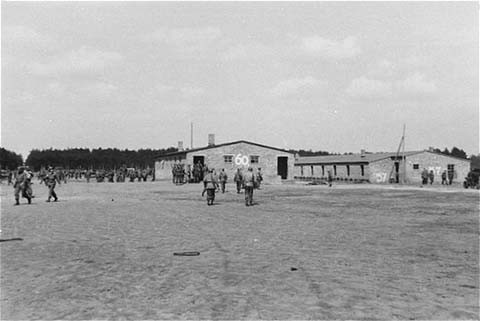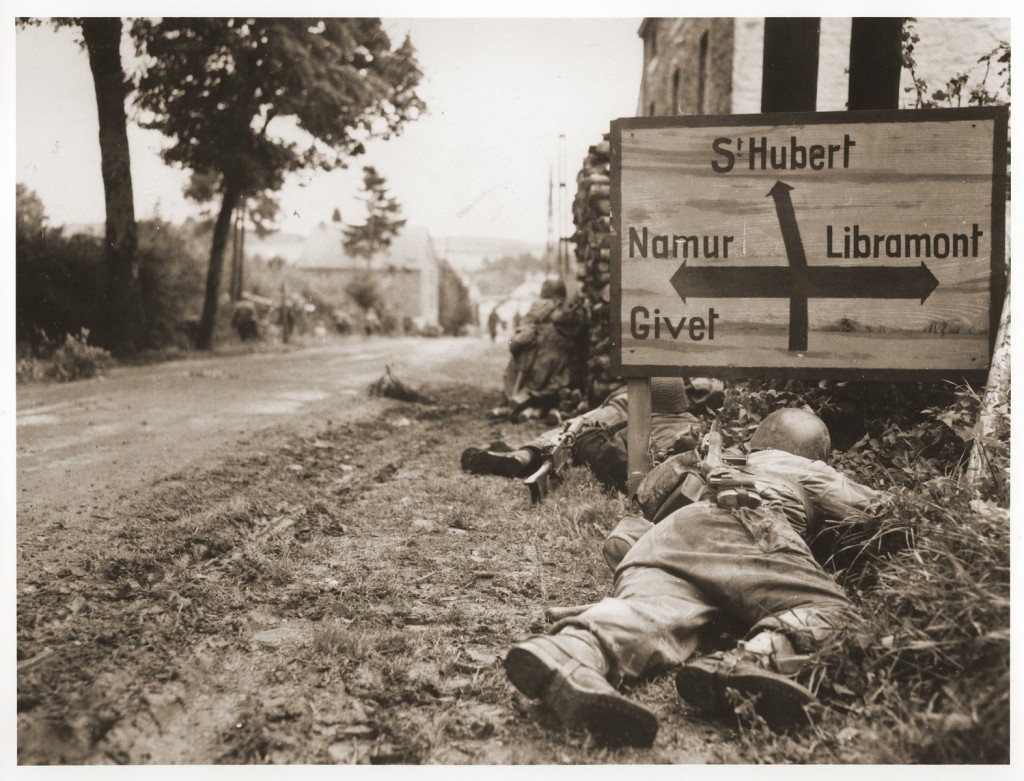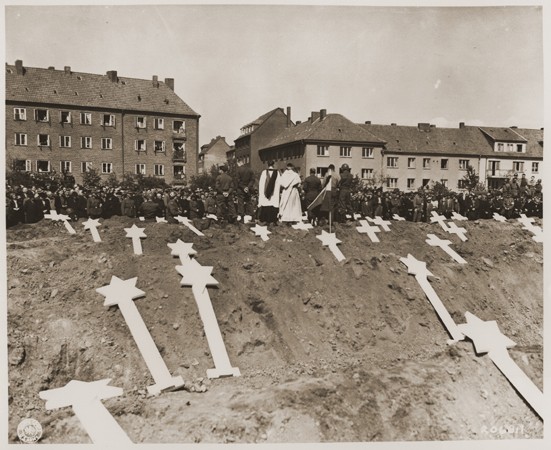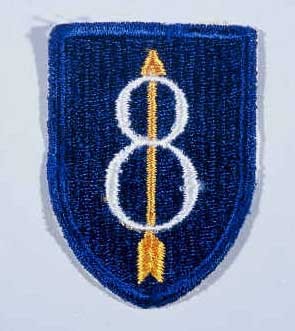
The 8th Infantry Division during World War II
In 1985, the United States Holocaust Memorial Museum and the US Army Center of Military History began a program to honor US Army divisions that took part in the Allied liberation of Nazi camps. The US Army Center of Military History defines a liberating division as one whose official records show its presence at a camp within 48 hours of the first soldier’s arrival. The 8th Infantry Division is among the 36 US divisions that have been recognized to date.
Key Facts
-
1
US, British, Soviet, and Canadian troops encountered concentration camps and other sites of Nazi crimes as they advanced across Europe in 1944 and 1945.
-
2
The Allied soldiers liberated sick and starving camp prisoners from Nazi tyranny. They also provided them with food, clothing, and medical aid.
-
3
The United States Holocaust Memorial Museum and the US Army Center of Military History have recognized 36 US divisions for their role in the liberation of Nazi camps.
8th Infantry Division Campaigns during World War II
The 8th Infantry Division was formed in 1918 during World War I and was sent to France that same year. During World War II, in early July 1944, the "Golden Arrow" division landed on Utah Beach in Normandy, just weeks after the Allies invaded France on D-Day (June 6, 1944). Shortly after its arrival, the division captured the French cities of Rennes and Brest.
Following these actions, the 8th turned eastward toward the German border, taking part in the heavy fighting in the Hürtgen Forest in November 1944. In early March 1945, the 8th had advanced into the Rhineland. It fought its way into the Ruhr region the following month. By war's end, the "Arrow" division had advanced to the Elbe River in central Germany.

The 8th Infantry Division and the Liberation of Wöbbelin
On May 2, 1945, as it advanced into northern Germany, the 8th Infantry Division encountered the Neuengamme concentration camp Wöbbelin subcamp, near the city of Ludwigslust. The SS had established Wöbbelin in early February 1945 to house concentration camp prisoners who had been evacuated from other Nazi camps to prevent their liberation by the Allies. Wöbbelin held some 5,000 inmates, many of whom suffered from starvation and disease. The sanitary conditions at the camp when the 8th Infantry Division and the 82nd Airborne Division arrived were deplorable. There was little food or water, and some prisoners had resorted to cannibalism. In the first week after liberation, more than 200 inmates died. In the aftermath, the US Army ordered the townspeople in Ludwigslust to visit the camp and bury the dead.

Recognition as a Liberating Division
The 8th Infantry Division was recognized as a liberating unit by the US Army's Center of Military History and the United States Holocaust Memorial Museum in 1988.
8th Infantry Division Battle Casualty Figures
Hundreds of thousands of US servicemen and women died or were wounded in the fight against Nazi tyranny.
The total number of battle casualties for the 8th Infantry Division in the European Theater of Operations during World War II was 13,986. In this case, “battle casualties” includes all personnel who were unable to fight in battle because they were wounded, missing, captured, or killed.
Among the battle casualties suffered by the 8th Infantry Division, there were 2,852 deaths.
8th Infantry Division Nickname and Insignia
The 8th Infantry Division was formed in California in early 1918, but did not see combat during World War I. During World War II, the 8th was known by two nicknames: “Golden Arrow Division” and “Pathfinder Division.” The nickname “Golden Arrow” became more commonly used and is reflected in the Division’s insignia or patch. The division’s insignia is in the shape of a royal blue shield. In the middle of the patch is the number “8” stitched with silver thread. A golden arrow pierces through the figure 8. The arrow points upward or northward.

Footnotes
-
Footnote reference1.
In the aftermath of World War II, the US Department of the Army compiled casualty figures for US Army personnel. The US government published these figures in 1953. The report listed casualty numbers for the US Army for the period from December 7, 1941 (Pearl Harbor) through December 31, 1946, when US President Harry S. Truman officially declared the end of war hostilities. Army Battle Casualties and Nonbattle Deaths: Final Report, 7 December 1941-31 December 1946, Prepared by the Statistical and Accounting Branch, Office of the Adjutant General, Under the Direction of the Program Review and Analysis, Division of the Comptroller of the Army, O.C.S., (Washington: Department of the Army, 1953), p. 3-4, 84-89.
Critical Thinking Questions
What challenges did Allied forces face when they encountered the camps and sites of other atrocities?
What challenges faced survivors of the Holocaust upon liberation?

